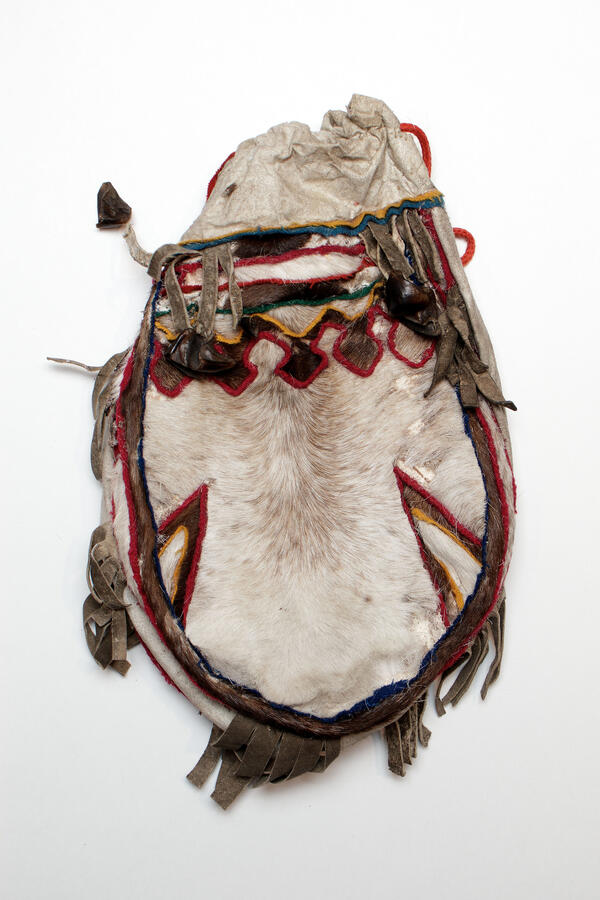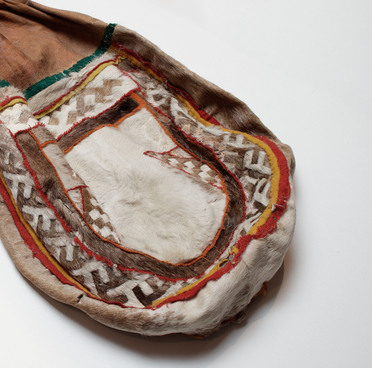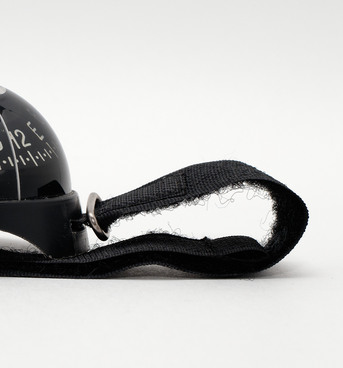The Nenets people have a saying: “A woman’s right index finger supports the entire tundra.” Sewing was the main occupation of women of northern nomadic peoples. For centuries, they hand-sewed and repaired all items of clothing and shoes made of fur, leather, as well as beds and large pieces of canvas for the walls of portable chum tents.
This item was brought from the settlement near the Ngosavey-to Lake of the Yamalo-Nenets Autonomous Okrug. A tutsya is a traditional Nenets women’s bag for handicrafts. According to one version, the name “tutsya” translates as “little fire” and symbolizes the hearth looked after by a woman. The place of this bag was on the women’s side of the chum tent, near her bed, as it was necessary to always have it at hand.
Girls and women kept their sewing accessories, such as pieces of fur, cloth, leather, tendons for sewing, needles, and scissors, in the tutsya bag. The bag is a vertically elongated sack with an opening, closed with a buckskin cord. The main part is divided into front and back walls called “xia” and “hev” respectively. Such bags had an average height of 30–40 cm and width of 20–25 cm.
A tutsya bag was an object of pride, so it was decorated with embroidery, applique, national patterns and pieces of fur. Usually, the front side was richly decorated and the back was reasonably plain. Tutsya bags were made of two skins from a deer’s head. The eye holes on the bag were always sewn with strips of fur and edged with colored cloth — red, yellow and green. A “maser” is a buckskin fringe inserted in the top seam. It is attached in bundles of several strips or evenly over the entire perimeter of the bag.
One side of the tutsya bag featured a small purse hung on a leather loop or a metal chain called a “padko”. It was used to store threads and tendons. A pincushion called a “niv nesya” decorated with cloth was also attached to the bag. One or two pouches for storing thimbles were sewn to the bottom edge of the pincushion. These pouches were miniature copies of the main bag embroidered in the same way. The thimble pouch appeared on the tutsya bag at the same time as the thimble itself, in the late 19th — early 20th century. Before that, Nenets women protected their fingers from needle pricks with a piece of buckskin folded several times.



